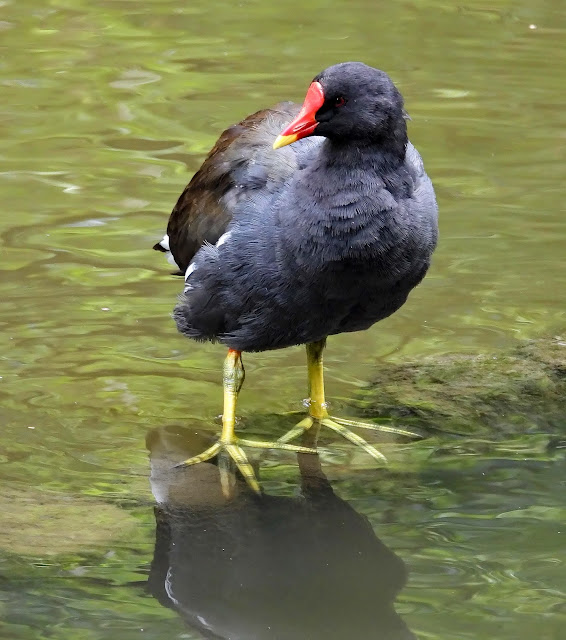Like most seabirds, Atlantic puffins get all of their food from marine sources but nest on land. Their preferred prey includes forage fishes, including herrings, capelins, sprat, and others. While nesting, they generally feed close to their nesting sites but may go on longer feeding trips during other seasons. Atlantic puffins are pursuit divers – they “duck dive” from the sea surface and chase prey, using their wings like flippers. Using this method, they can dive as deep as 200 feet (60 m). When on long foraging trips, Atlantic puffins rest (and even sleep) on the sea surface rather than on the wing. Unlike most seabirds, their wings are relatively small, and they are unable to glide.
Atlantic puffins are typically solitary while foraging, so most of scientists’ knowledge of this species is a result of studying nesting birds. During the nesting season (spring), these birds return to their natal colonies (the places where they hatched) and form pair bonds that allow them to raise chicks to maturity in the harsh north Atlantic Ocean. During the nesting season, Atlantic puffins remain monogamous, and some pair bonds are consistent from year to year. Colony size is limited by availability of nest sites, and late returning birds may not be able to find a suitable area and therefore not be able to reproduce.

Atlantic puffins were historically hunted heavily and populations have declined. In most places, this species now has some or complete legal protection, but populations continue to trend downward, perhaps as a result of changes to north Atlantic food webs. Fortunately, these negative trends are not threatening the species, and scientists recently determined that it is one of least concern. However, it is important to continue to monitor populations to ensure that declines do not become more severe.
Atlantic puffins are birds that live at sea most of their lives. They fly through the air like most birds, but they also "fly" through the water, using their wings as paddles. As they swim, they use their webbed feet to steer, much as a boat uses a rudder.
Puffins eat small fish—such as sand eels and herring—which they hunt underwater. They generally stay underwater for 30 seconds or less, but are able to dive 200 feet deep and stay down for up to a minute.
Well adapted for their home in the water, puffins are also speedy in the air. They flap their wings up to 400 times a minute, speeding along in the air at 55 miles an hour—as fast as a car on a highway. (How many times can you flap your arms in one minute?)
As a puffin matures, its beak and feet change from a dull gray color to bright orange.
In the spring and summer, thousands of puffins gather in colonies on the coasts and islands of the North Atlantic Ocean. They stay in colonies to limit their chances of being eaten by the herring gulls that fly overhead. At the ages of 4-6, pairs of puffins often become mates for life, finding each other at their breeding colony year after year. They show affection by rubbing and tapping beaks. The pair often uses the same burrow they used the year before.
Using their beaks and claws, puffins build their burrows between two boulders or in a rocky crevice. They line the burrow with feathers and grass before laying the egg that will incubate for 42 days.
A baby puffin is known as a chick or puffling. When it first hatches, it looks like a furry ball of feathers. As it gets older, it will grow sturdy and smooth feathers to help it swim and fly.
Born on North Atlantic islands, pufflings leave their burrows after 45 days. They won’t return until it is their turn to lay eggs.
A puffling eats so much food that both the mother and father have to supply it with fish. In one day a parent may dive 276 times, bringing back 10 fish each time. The puffling swallows the fish head first and whole. By the time the puffling leaves its burrow, each parent will have dove 12,420 times.


%201.jpg)
%20%204.jpg)
%201.jpg)
%202.jpg)
%203.jpg)


%201.jpg)
%202.jpg)


%201.jpg)









%2020.jpg)
%2021.jpg)


%201.jpg)
%2020.jpg)
%201.jpg)
%202.jpg)
%201.jpg)
%202.jpg)
%201.jpg)





%2020.jpg)
%204.jpg)




%201.jpg)